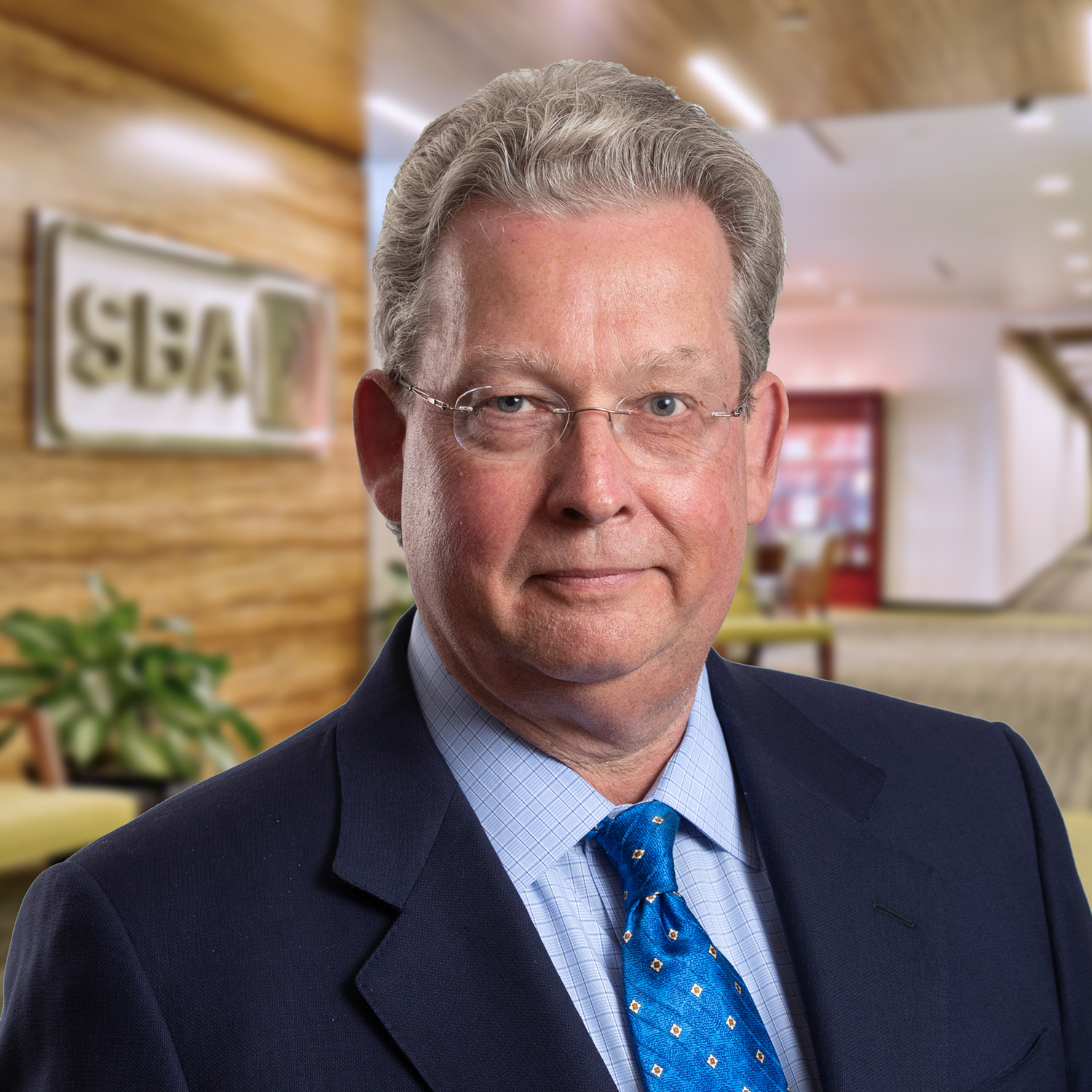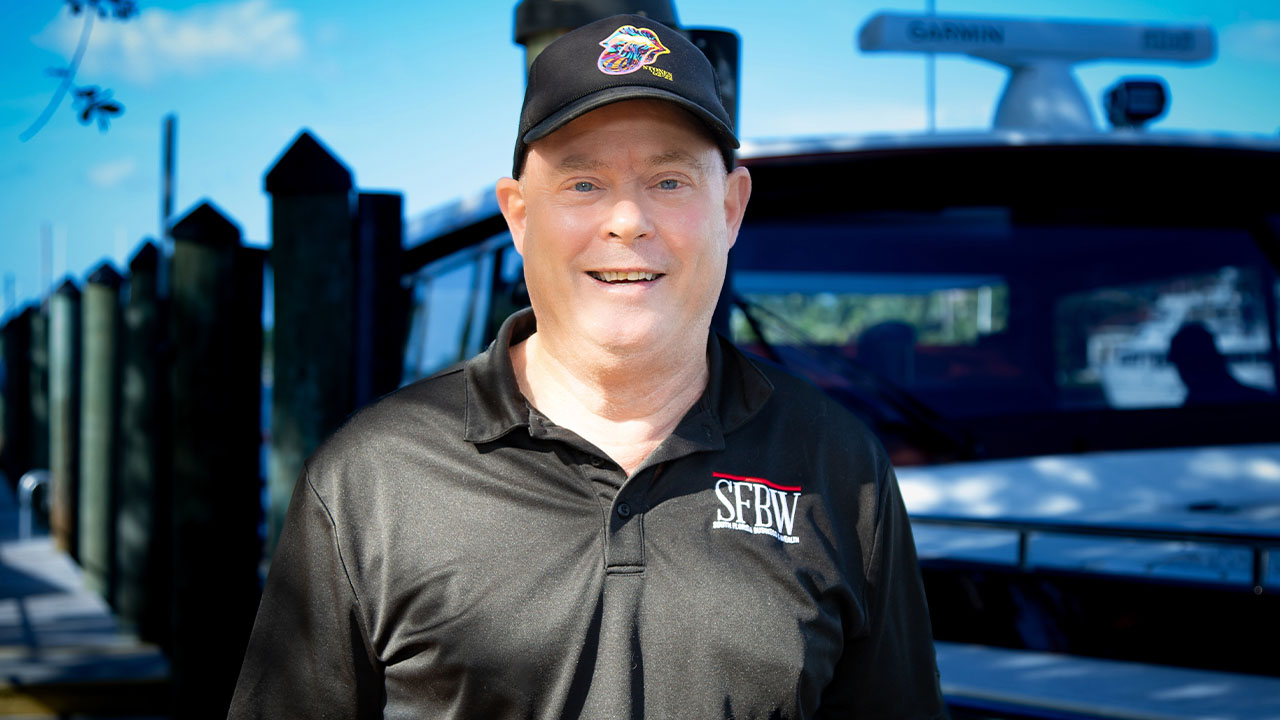This edition’s cover story is based on a “Virtual CEO Connect” event held on May 27 with Jeffrey A. Stoops, who has been CEO of SBA Communications Corporation since 2002 and a director since 1999. He joined the company in March 1997 as general counsel with the primary focus of moving SBA into the business of tower ownership and also served as CFO.
Stoops previously was an attorney and partner with Gunster, where he practiced for 13 years in the corporate, securities, and mergers and acquisitions areas.
SBA owns and operates more than 32,000 wireless communications sites in 14 countries across three continents. SBA employs approximately 1,500 people and in 2019 produced over $2 billion of revenue.
SBA is one of Florida’s 10 largest public companies by market capitalization and a member of the S&P 500. Since its initial public offering, SBA has produced compound annualized shareholder returns of 18 percent.
Stoops has accepted a number of awards, including Florida Atlantic University’s Business Leader of the Year. He is a director and past chairman of the Wireless Industry Association, the trade organization for the wireless communications infrastructure industry. He is chairman for The Raymond F. Kravis Center for the Performing Arts in West Palm Beach and on the boards of the Children’s Healthcare Charity, which produces the Honda Classic golf tournament, Seminole Boosters Inc. and the Community Foundation for Palm Beach and Martin Counties.
The moderator for the conversation was SFBW Editor-in-Chief Kevin Gale. The following highlights have been edited for brevity and clarity.
When did you start to see COVID-19 emerge as an issue, and how has that impacted your business and your workers, especially since you’re providing critical infrastructure?
It really first started hitting my radar screen in February long with kind of the increase in the national news. But as we moved into March and things got progressively worse, our attention levels started to ramp. We started to form some committees at the company to do various scenario planning in the event that we would decide to close down the offices. We ultimately made that decision in late March for the entire company on a global basis.
We have never been a telecommuting company, but because of the preparations that we put in place we became one in less than a week. I will tell you that we’re doing well, but I don’t think telecommuting is perfect. I think there is a lot lost in terms of collaboration, the entrepreneurial kind of zest that I think has made SBA great over the years.
We were deemed early on by the government in every country in which we operate as providers of essential infrastructure. So, we were able to stay in operation. The folks who have field jobs, which is probably 25 to 33% of our business, have worked all the way through as if nothing has happened. They’re still out, climbing towers, adding equipment, making sure that the wireless networks are up and running. Demand has been tremendous throughout all this. The network needs have moved more from the urban markets, where people used to be, to the suburban markets, where the people are now. So, you’ve had to retune networks, provide additional capacity and we’re also now just on the cusp of a massive 5G build out, which hasn’t stopped.
What have you learned from this COVID-19 challenge that you will use to drive more success at SBA?
I think telecommuting will change a lot of future business. We look for places that will be good homes for future wireless antennas and radios. So, are those going to be the large office buildings going forward? Are those going to be more in suburban areas? Many people think that it will be tough for the large office buildings to fully recover. Hospitals will be much more in demand for seamless connectivity. Telemedicine was much needed, still is very much needed through this.
What was your reaction when you heard the conspiracy theories that 5G is related to COVID-19? I think there were even some cell towers attacked in the UK.
Well, I didn’t put much stock in it at first because in my 23 years at SBA, I’ve kind of seen everything. So, you go to you go to zoning hearings, and you hear all kinds of arguments that people make to keep towers from being built. You know, you can’t put them near schools because it’ll turn your kids green. There’s always somebody who has a minority view, but stands up and speaks the loudest to try and get their way. As it started to gain a little bit more attention, and then fostering property damage, I began to pay a little bit more attention to it. I think it’s representative of a lot of unfortunate things you see today that stem from the widespread availability and use of the internet. There’s not a shred of evidence, of course, to support that theory. I’m confident there never will be. But the problem with those types of theories is it’s like trying to disprove a negative, right? So, it’ll take a reputable doctor, a 10- to 20-year study to conclusively eliminate that.
Tell us about your early life.
I grew up in Wilmington, Delaware, one of a long line of Delawarians. I had a lot of different jobs starting I think when I was 12 years old. This will really date me, but I was a Fuller Brush man, which basically was door-to-door sales, selling housecleaning items. So, I had a lot of jobs and it taught me that I really didn’t want to do construction. I wasn’t well-suited to a lot of those jobs. I figured I better find something to do as a professional in an office before I really hurt myself.
I went to the University of Delaware for the first two years and I majored in having a really good time. I decided that I needed to leave Delaware—I was the first one in my family to do so—to calm down. I transferred to Florida State University, believe it or not, and that’s where I, pursued a career ultimately to get into law school. I was a political science major. I really enjoyed FSU. I met my wife. We decided to make Florida our home. After law school, I had a bunch of different offers in different cities and ended up pretty much sight unseen, just based on the interview, with the great folks at Gunster, so I ended up in West Palm Beach.
When did SBA get on your radar?
I first met Steve Bernstein, who was the founder and at that time 100 percent owner of SBA in 1996. One of the litigator lawyers at Gunster had gotten a call from his brother-in-law, who was the CFO of SBA, and SBA was looking for some corporate-merger advice. I ended up having the call transferred to me, because I happened to be eating lunch at my desk that day. That call could have gone to anybody, but it happened to go to me. And so we set up a meeting and I met Steve and helped him get through some things and we struck up this wonderful relationship, which continues to this day. While I loved the practice of law and the Gunster firm was great and is great, I really got the most charge out of making decisions and being a principal as opposed to advising the principals. So, I was keeping my eye open for opportunities to leave the practice of law. What I was doing for Steve was basically raising the first outside money for SBA. SBA had never been audited, had never been scrutinized by outside investors. So, all through the process, all of these very respected outside third parties were giving SBA flying colors. So, about a year into the relationship, just as the first outside money was being raised, Steve made me an offer. I accepted it. It caused quite a stir in the community that a full equity partner would leave a prestigious firm like Gunster to go to what was essentially an unheard of private startup company, but I did it, and it all turned out OK.
You have a really nice 25th company anniversary video on your website and there’s an interesting story on there about when SBA was going public. You could only get interest from the investment bankers at the last minute to sell $90 million in shares instead of $100 million dollars. How did you close that gap?
Two of our peers had already gone public and the investment community didn’t really understand towers, yet. They thought that, well, if you had one tower company, why did you need another? They thought everything was much more of a commodity as opposed to an exclusive asset business, which is, of course, what we are. The market had gotten a little soft. The private equity sponsors and Steve were basically the ownership at the time. They were the selling shareholders. So, as the deal started to struggle a little bit, they pulled their shares out of the deal. So, there was just primary shares being sold in the IPO and then as it continued to struggle, they went from selling shareholders to actually buying more shares to get the deal done. Now, thankfully, any one of them will tell you it was one of the better investments that they ever made.
So if I would have bought 100 shares in SBA at the initial public offering, what would that have cost then and what would they be worth now?
Well, we went public at $9, so that would have cost you about $900. And based on yesterday’s close, they’d be worth about $29,349.
That is pretty sweet.
That’s OK, right?
Yeah. Well, you had some drama, though. You got caught up in the Internet bubble and then your stock went down to 19 cents. People actually thought you were going to go bankrupt.
Well, so, that was 2002. That was my first year as CEO. They call that the Telecom Bust of 2002. Throughout the entire telecommunications landscape, there was all kinds of trouble in large part because too much money had been lent. So, we were in the process of transitioning our business from a services company with a lumpy kind of revenue cycle to tower ownership, which, of course, has a much more predictable long-term steady revenue base. But, we weren’t anywhere near close to completing the transition and lenders were caught up in the craze like they were with Internet. So, in the early days of towers, they would just lend you money based on how many towers you owned, regardless of how profitable you were or what kind of cash flow you could produce. Well, they changed that literally overnight in 2002. So, everything got very tight. A lot of loans went into workout. We were 15 times leveraged—15 times debt to EBITDA. That’s really high and not something that you would advise your children to do at home, unsupervised. We weren’t actually going to default, but we had a covenant that we needed to have waived, which in any normal time would have easy to obtain. But these were not normal times and everyone was just looking to basically call the loans and get repaid. So, two other companies—there were five public tower companies at that time—had already filed for Chapter 11 and reorganized. There were some distressed debtholders who were buying up all of our debt so that they could basically own SBA and wipe out our equity through a Chapter 11 bankruptcy filing.
So, while we were negotiating with these distressed debt vultures to try and maintain as much as possible for our shareholders—I mean, Steve Bernstein would have been wiped out and I took that very seriously—we also came up with another parallel plan, which was to sell enough of our towers to pay off just enough debt to eliminate the source of our issues and just kind of live to fight another day. We sold off all the towers that we owned starting at the Pacific Ocean till we got about to the Mississippi River. It was about 850 towers. And we took out the troublesome piece of debt. We refinanced and we slowly grew the business back, never declared bankruptcy. I would tell you that it’s our proudest moment.
Is there any impact from the capital markets on your business now?
No, but we weren’t taking that for granted. We just last week raised an additional $500 million in the high-yield market, which arguably we didn’t need. But we have some additional refinancing that comes due in the fall and I frankly don’t know where the world will be. My personal view is the capital markets are somewhat disconnected from the real world right now. For the stock market to be close to setting all-time highs and markets to be functioning as well as they are for large companies, I think, does not accurately reflect what is going on on Main Street.
There’s some interesting things going on in the wireless business these days. You have the Sprint/T-Mobile merger, you have Dish building out a network, and the emergence of 5G. How is that affecting your business?
Well, it’s going to benefit us quite a bit, because the primary motivation of T-Mobile to buy Sprint was to get their 2.5 gigahertz spectrum. That’s known as mid-band spectrum and it’s basically the beachfront property for 5G because it not only travels a good distance, it provides a lot of data capacity. For them to deploy that, they’re going to need to deploy new radios and antennas and that means additional equipment on our towers and on other towers throughout the industry. That’s gonna really start to kick in high gear in the second half of this year and then continue on for several years. Dish really was a huge beneficiary of the merger, because to get the merger approved, the government required essentially that with the loss of Sprint that a new fourth nationwide provider be created and that came about in the form of Dish, who now is being provided enough spectrum and enough opportunities to grow to truly be competitive. Now, for them to do that, they have to build out a brand new nationwide network, which of course, is also going to require a tremendous amount of new antennas and radios to be deployed, also, which will directly benefit our industry. So, a lot of business coming our way.
Where do you see
SBA in five years?
I think we will be in some more countries. I think we will obviously be larger and I think we will have moved into some new areas that are tangential to the primary areas of macro towers. One of the most exciting is called “mobile edge computing.” It really needs 5G to become a reality before it will become a reality for us. But, in essence, it requires that the computing power be moved closer to the point of transmission, so that the send and receive happens really quickly. Well, the closest spot to the send and receive wirelessly is, of course, the cell site and we control the cell site. So, it’s natural for our company to be heavily involved in mobile edge computing. We’re spending a lot of time and research and development. We bought a data center to actually get smart about that business, and we’ll continue to expand our scope and capabilities, because we do believe the world is headed in that direction. ♦

















